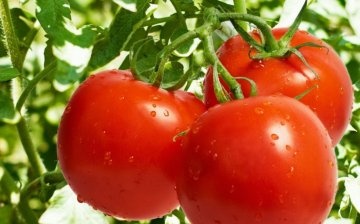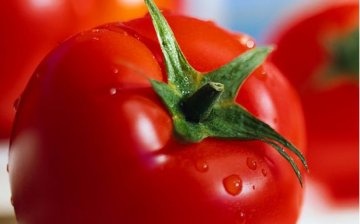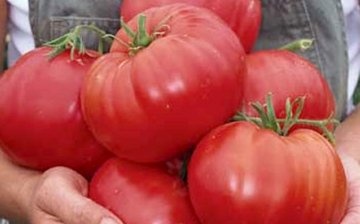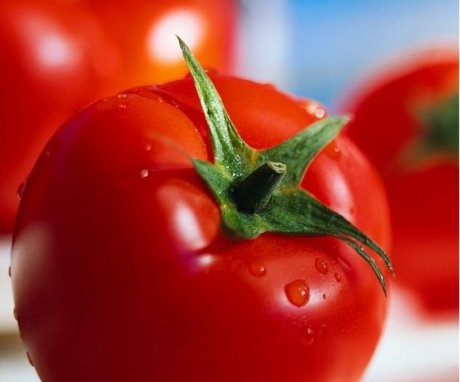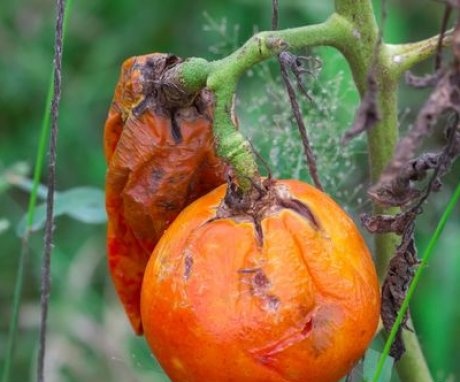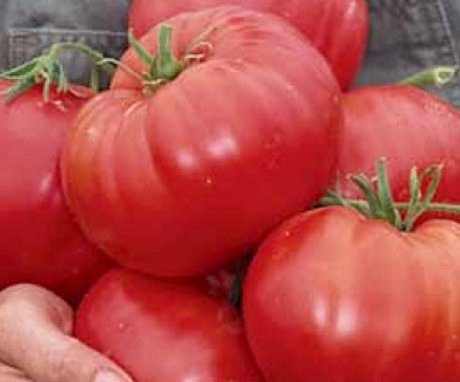Description and characteristics of late blight-resistant tomato varieties
The most dangerous disease for tomato is late blight. It is thanks to him that, since the middle of summer, many gardeners have been deprived of their crops, in which a lot of work has been invested. If the fruit affected by late blight enters the basket with healthy tomatoes, then they become infected.
The climatic conditions of our country favor the development of late blight, with the help of fogs and cold snaps beginning in mid-summer. By producing processing plants from late blight with special drugs it is possible to stop the spread of the disease, unless, of course, uninvited rain will wash away the protection. What varieties are late blight-resistant? We will try to find the answer to this question in this article.
Content:
- How to provide yourself with healthy tomatoes?
- How to prevent the development of late blight?
- Phyto-resistant varieties of tomatoes
How to provide yourself with healthy tomatoes?
Modern breeders have studied this problem and created new varieties that are resistant to late blight. This is very good and necessary, as the harvest wave tomato falls in August, and at this time late blight is rampant. New varieties of tomato have the ability to form an ovary even in a not very warm climate due to the onset of a cold snap.
At the same time, tomato varieties resistant to late blight are practically unpretentious in care and do not require frequent tying of the stems due to their own low growth.
Also, new late blight-resistant varieties do not need pinching, which is also quite pleasant, since you do not have to spend time and effort on this. Another advantage of the new varieties is fruiting in autumn, due to the shelter of low bushes. Thus, they are absolutely not afraid of weak frosts.
How to prevent the development of late blight?
Such a terrible disease for tomatoHow late blight is easier to prevent than to fight it later. First, gardeners should use for planting the seeds such tomatoes that are resistant to this disease.
Such seeds can be purchased in specialized stores; they must be marked with resistance to this disease.
Today, breeders have bred a large number of such plants and many of them are zoned to the climate conditions of the area. Such seeds should be purchased.
But the success of obtaining the future harvest depends not only on seeds. It is important to carry out special preventive measures against late blight. It is with their help that you can not only protect plants from damage, but also significantly strengthen their protective properties.
Prevention of tomato disease:
- One of these measures is the preliminary soaking of tomato seeds prepared for sowing in freshly prepared potassium permanganate, low concentration. Soaking should be done for at least half an hour. In this way, you protect the seeds from fungi and other pathogens living in the soil.
- Another preventive measure against late blight is spraying the bushes with prepared garlic solution.Such spraying is carried out at the stage of active vegetation, when stepchildren form and grow. To prepare a garlic solution for spraying, you need to take a bucket of water and dip about one glass of chopped cloves into it. garlic... Mix the solution thoroughly and let it brew for some time. The remedy for preventing the development of late blight is ready. They can be sprayed several times per season.
- Another method of combating the disease is spraying with a boric acid solution. It can be purchased at any pharmacy, and each of us can prepare a solution. To do this, take one teaspoon of boric acid and dissolve it in a bucket of water. The resulting solution is sprayed with bushes tomato.
- An excellent prophylactic agent in the fight against late blight is a freshly prepared solution based on ordinary baker's yeast. It is very simple to prepare it: in one bucket of liquid you need to dissolve about one hundred grams of fresh baker's yeast. The resulting solution is sprayed with tomato plants.
- An iodine solution helps well in the fight against late blight. You can prepare it yourself at home. This requires a bucket of water and about forty drops of iodine tincture. These components must be mixed with each other and the means of struggle is ready. Plants are sprayed with iodine solution during the growing season.
- To combat progressive late blight, we help crop rotation in crop rotation. You should not plant a tomato plant in the same area for several seasons, since phytophthora spores remain in the soil and through it infect other bushes. The culture should be returned to this site no earlier than four years later.
Good precursors for tomatoes are:
By planting these crops a year before planting tomatoes on this site, you can protect tomato plants from late blight. In addition, in order to prevent the development of late blight in this area of soil, it is recommended to remove the tops from plants, since it contains late blight spores.
If you leave the tops on the site, then the spores will pass into the soil, causing it to become infected. By carrying out such simple measures, you will be able to protect tomato plants from the terrible phytophthora.
Phyto-resistant varieties of tomatoes
Despite the disbelief on the part of many gardeners in the existence of late blight-resistant varieties tomato, they are still withdrawn. Scientists have succeeded in genetically fixing the resistance of plants to lesions by late blight. The once invincible disease was defeated! The new varieties that have been developed can be successfully grown in open ground conditions, when, like many gardeners, have long ceased to do this.
New varieties of tomatoes, resistant to late blight, give a bountiful harvest in August.
It is in this month that ordinary varieties of tomatoes already stand with darkened leaves, and late blight-resistant plants are completely green. The fruits formed on such tomatoes have a fairly even shape and are devoid of black spots.
Consider some varieties of tomatoes that are resistant to late blight lesions, which are very popular in our area:
- Alpatieva 905 A. this variety is successfully grown under conditions open ground and get a bountiful harvest of fruits. The variety is not affected by late blight. To save time and effort for gardeners, the Alpatiev 905 A variety does not require pinching.
- Budenovka. The variety with such a sonorous name is intended for growing in open ground conditions, but it is also possible in greenhouse conditions. The fruits of this medium-early variety are not affected by late blight and have excellent taste. On average, the weight of one fruit of this variety exceeds the weight of 350 grams. The harvest of this variety is always plentiful.
- Dwarf.The fruits of the early ripening variety Gnome are intended for cultivation in open ground. They require pinching and are not affected by late blight.
- Oak. The variety with such an easy-to-remember name is early maturing and is grown outdoors. The fruits are quite tasty and plentiful on the bush. Late blight these tomatoes are also not affected.
- Lark F1. This variety belongs to the category of ultra-early ripening hybrids that are quite resistant to late blight disease. The ovary in such varieties is formed in any climatic conditions, even during a cold snap. The fruits go well with other vegetables in homemade canned food. Ideal for preparing salad masterpieces.
- Blizzard. The fruits of this new tomato variety are not only highly resistant to late blight, but also quite large in appearance. This mid-season variety is well suited for outdoor climatic conditions, with its low night temperatures and morning fogs.
- Tsar Peter. It is not without reason that this variety received such a majestic name, as it is quite popular not only among breeders and experienced gardeners, but also among ordinary housewives. The fruits of this mid-ripening variety are not affected by phytophthora. The ovary is formed in a cold summer, which is very important for the inhabitants of the middle zone of our country. In addition to phytophthora, the variety is immune to infections by the tobacco mosaic virus and stress.
More information can be found in the video.



